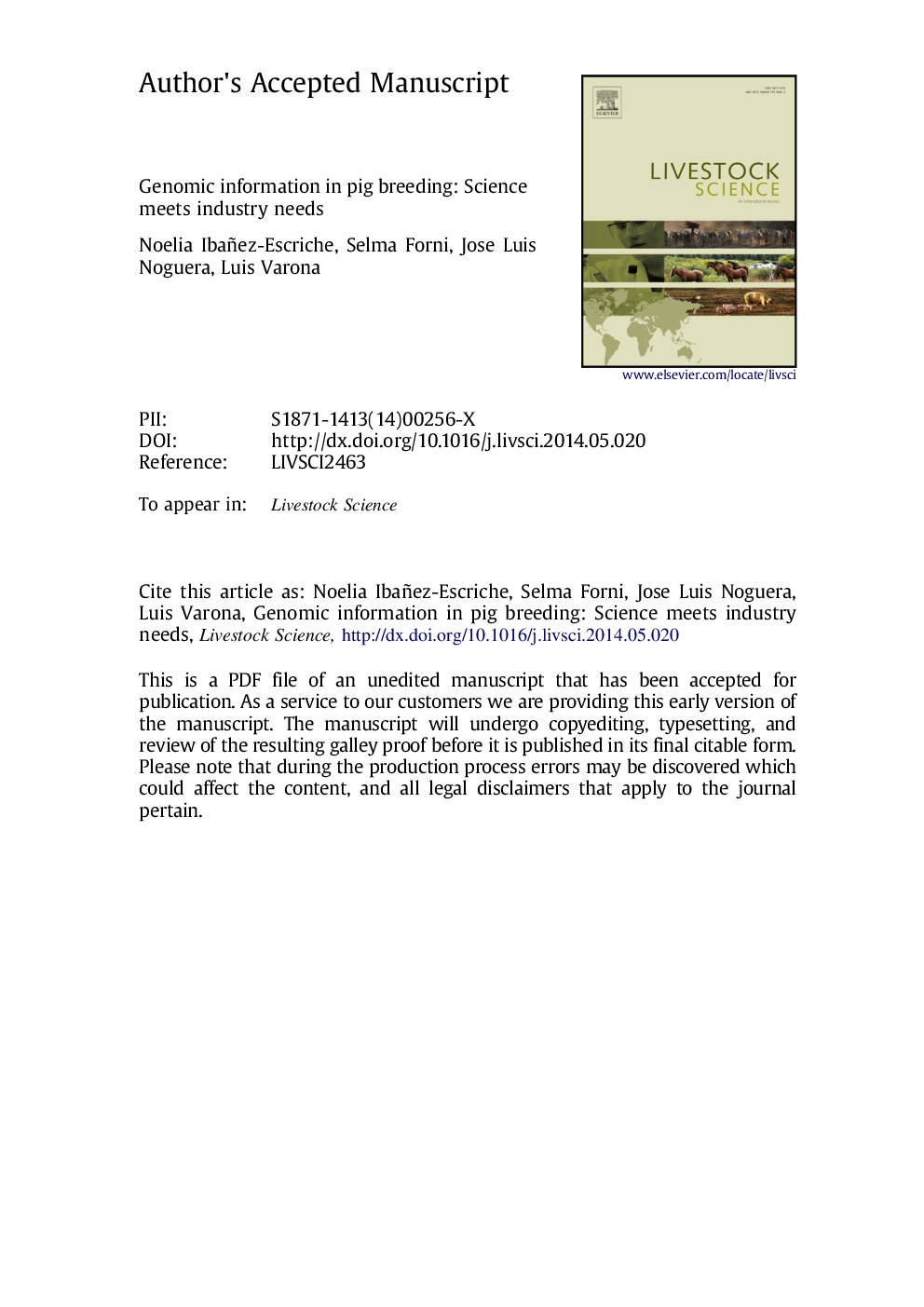| Article ID | Journal | Published Year | Pages | File Type |
|---|---|---|---|---|
| 5790162 | Livestock Science | 2014 | 26 Pages |
Abstract
The inclusion of genomic information on prediction of breeding values has been explored by the pig breeding industry as molecular techniques evolved. Except for a few successful cases, for example the HAL-1843®, the use of genomic information for pig breeding has been limited. The development of SNP chips with high density markers across the genome coupled with new statistical methods allowed genomic selection (GS) to become a common practice. GS application entailed important advantages for pig breeding as it increased the accuracy of the breeding values for selection candidates and offered an opportunity for the practice of new selection strategies. Nevertheless, the application of GS is not straightforward for every target trait and breeding scheme. Many efforts have been done to evaluate the new methods and strategies to efficiently implement GS in pig breeding. Several aspects of the population and breeding objectives must be considered before GS is applied. This paper reviews the current status and challenges faced by pig breeders in the implementation of GS and the future opportunities that may arise as molecular technologies advance.
Related Topics
Life Sciences
Agricultural and Biological Sciences
Animal Science and Zoology
Authors
Noelia Ibáñez-Escriche, Selma Forni, Jose Luis Noguera, Luis Varona,
